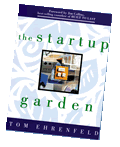
The Wal-Mart Economy Internet, sminternet. To me the biggest, most interesting, and the most culturally meaningful story in the economy right now is the continued growth of Wal-Mart. Alanis Morrisette might find it "ironic" (doncha think?) that one enduring legacy of wiring the world has been to bolster the clout of the nation’s biggest company. As Jerry Useem’s terrific Fortune story shows, Wal-Mart is arguably the world’s most powerful company. (Digression: I’m biased because I know Jerry, but his piece is the best business story of the year, period. I apologize to you readers for Time Inc.’s policy of charging you to read it!) And it’s not simply the company’s staggering size of more than $244 billion in annual sales (on one day last year its sales of $1.42 billion exceeded the GDP or 36 countries.) Nor is it the more than 1.3 million plus "associates," which makes it the biggest employer in 21 states, with more people in uniform than the U.S. army, that merit its mention. And it's not simply that the company is growing at 15 percent annually. Wal-Mart’s relentless mission of expanding on the simple goal of delivering increasingly affordable goods to consumers continues to expand geographically, categorically, and economically. Look for Wal-Mart groceries, gas stations, and private label goods everywhere. The salient theme about Wal-Mart is its unprecedented power to drive the business models of everyone else. Useem shows how folks like Jeffrey Katzenberg make the pilgrimage to Bentonville to garner retail sinecure for the Shrek DVD (which, coincidentally became the year’s bestselling DVD.) He shows how young women earning modest salaries purchase more than $1 billion of product per year. Here’s an excerpt that struck me as significant: "By systematically wresting ‘pricing power’ from the manufacturer and handing it to the consumer, Wal-Mart has begun to generate an economy-wide Wal-Mart Effect. Economists now credit the company’s Everyday Low Prices with contributing to Everyday Low Inflation, meaning that all Americans—even members of Whirl-Mart, a ‘ritual resistance’ group that silently pushes empty carts through superstores—unknowingly benefit from the retailer’s clout. A 2002 McKinsey study, moreover, found that more than one-eighth of U.S. productivity growth between 1995 and 1999 could be explained ‘by only two syllables: Wal-Mart.’ ‘You add it all up,’ says Warren Buffet, ‘and they have contributed to the financial well-being of the American public more than any institution I can think of.’ His own back-of-the-envelope calculation: $10 billion a year." One can see so many symptoms of the Wal-Mart Economy: low inflation, eroding brands, and an increasingly demanding consumer. It’s little wonder that Wal-Mart has become the number one topic of business school cases and courses, according to this recent New York Times article (again, sorry that you have to pay!) And it helps explain why economist Gene Sperling, in this clever Inc. article suggests that one great way to track the economy is to simply watch the trajectory of same store sales for the company, available through its website, in sales and summaries. (By the way, here’s a great sidebar to that article pointing you to other economic indicators.) Now if only the behemoth would do more to sell my book! One sale per store per day…. |
Recent Writing Flow as the Grand Unifying Theory of Productivity Lowering the Personal Entrepreneurial Threshold Good Writing Begets Good Writing
THE BOOK
Read or print the Intro and
Read some book reviews at Inc, 1-800-CEO-READ, and the Miami Herald. Read the publisher's press release. Visit the companies that Tom discusses in the book Hear a recent lecture by Tom on the Startup Garden STARTUP RESOURCES Read about other books and web sites about starting your own business. TOM'S WRITING Just Managing – articles that Tom wrote for The Industry Standard and some Business Articles written for Inc., Fortune Small Business, Harvard Management Update, and other places. BUY THE BOOK To buy directly from me, simply go to Paypal and send 15 bucks to Tom@startupgarden.com. I'll take care of the rest. If you have any questions, email me at that address. |
| © 2001-2003 Tom Ehrenfeld | Site design by Tim Swan | |
